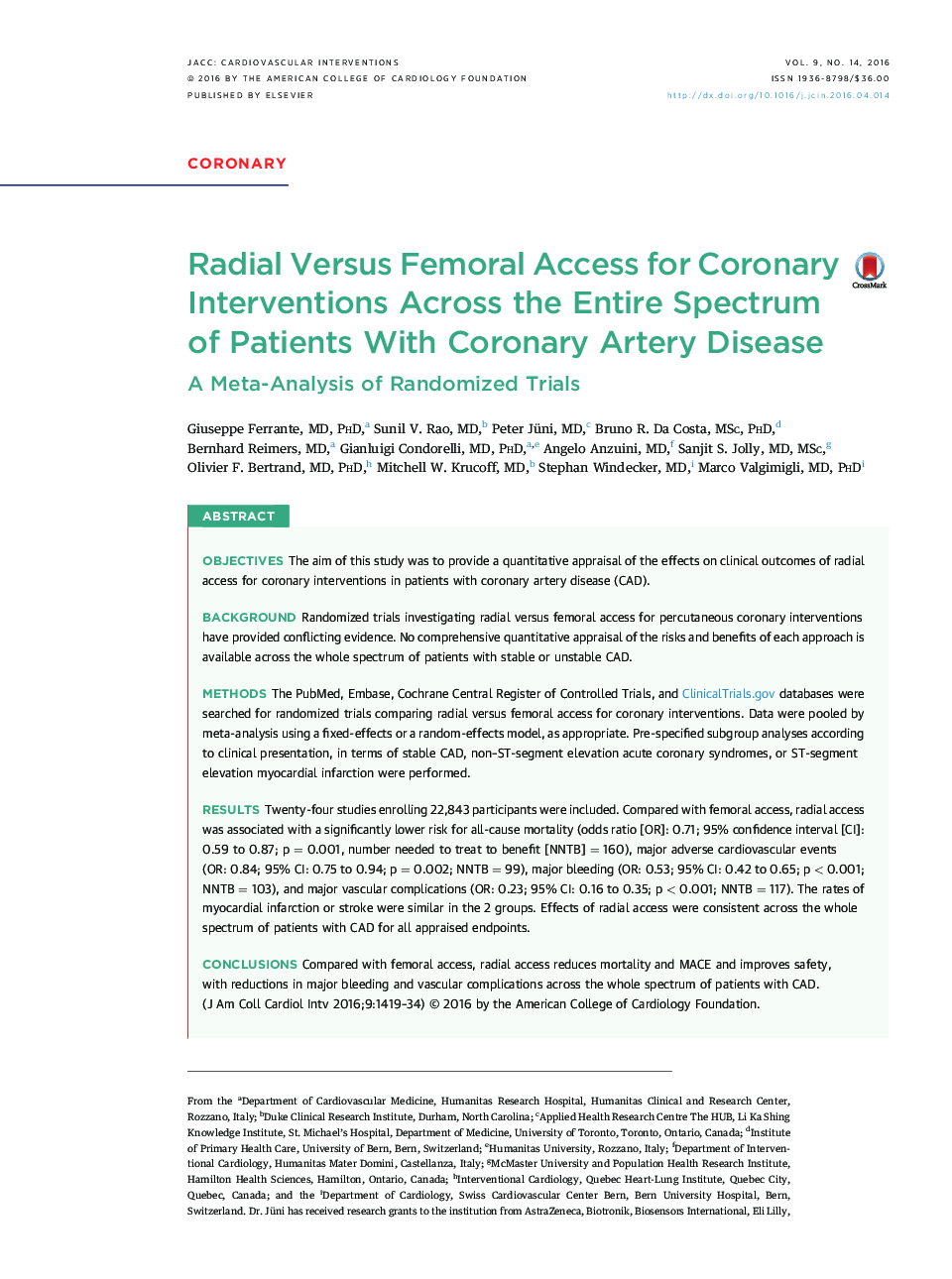| Article ID | Journal | Published Year | Pages | File Type |
|---|---|---|---|---|
| 2939453 | JACC: Cardiovascular Interventions | 2016 | 16 Pages |
ObjectivesThe aim of this study was to provide a quantitative appraisal of the effects on clinical outcomes of radial access for coronary interventions in patients with coronary artery disease (CAD).BackgroundRandomized trials investigating radial versus femoral access for percutaneous coronary interventions have provided conflicting evidence. No comprehensive quantitative appraisal of the risks and benefits of each approach is available across the whole spectrum of patients with stable or unstable CAD.MethodsThe PubMed, Embase, Cochrane Central Register of Controlled Trials, and ClinicalTrials.gov databases were searched for randomized trials comparing radial versus femoral access for coronary interventions. Data were pooled by meta-analysis using a fixed-effects or a random-effects model, as appropriate. Pre-specified subgroup analyses according to clinical presentation, in terms of stable CAD, non–ST-segment elevation acute coronary syndromes, or ST-segment elevation myocardial infarction were performed.ResultsTwenty-four studies enrolling 22,843 participants were included. Compared with femoral access, radial access was associated with a significantly lower risk for all-cause mortality (odds ratio [OR]: 0.71; 95% confidence interval [CI]: 0.59 to 0.87; p = 0.001, number needed to treat to benefit [NNTB] = 160), major adverse cardiovascular events (OR: 0.84; 95% CI: 0.75 to 0.94; p = 0.002; NNTB = 99), major bleeding (OR: 0.53; 95% CI: 0.42 to 0.65; p < 0.001; NNTB = 103), and major vascular complications (OR: 0.23; 95% CI: 0.16 to 0.35; p < 0.001; NNTB = 117). The rates of myocardial infarction or stroke were similar in the 2 groups. Effects of radial access were consistent across the whole spectrum of patients with CAD for all appraised endpoints.ConclusionsCompared with femoral access, radial access reduces mortality and MACE and improves safety, with reductions in major bleeding and vascular complications across the whole spectrum of patients with CAD.
